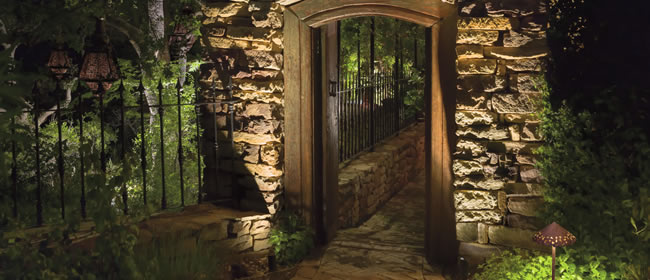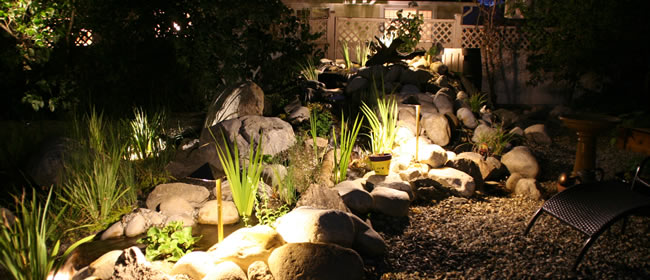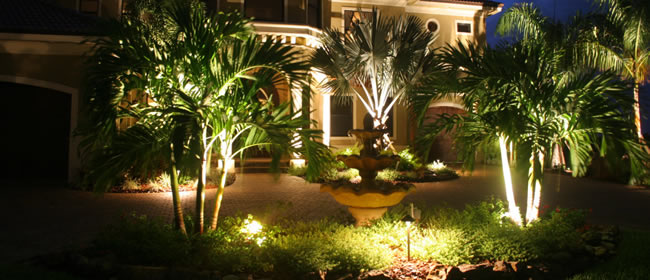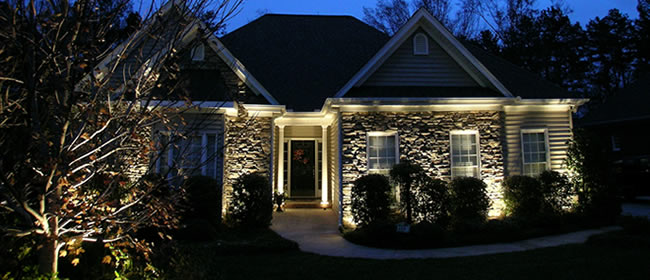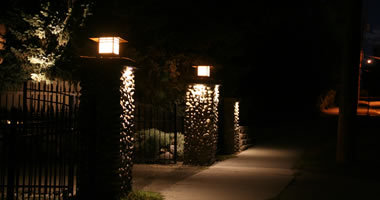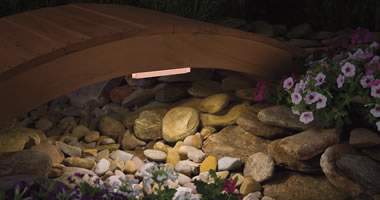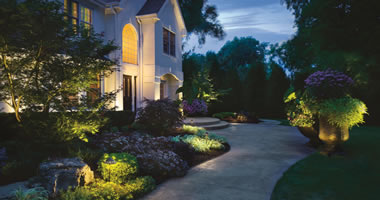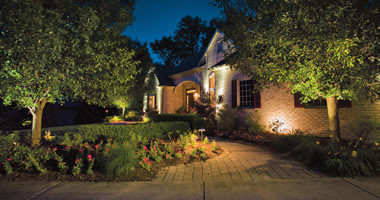Layout Considerations
 In addition to thinking about how you plan to use the space, there are design considerations as well. Lights not only help you safely travel down a pathway, but they can also provide a gorgeous view and allow you to enjoy your landscaping even after dark. The design elements of your layout are every bit as important as the function of your layout.
In addition to thinking about how you plan to use the space, there are design considerations as well. Lights not only help you safely travel down a pathway, but they can also provide a gorgeous view and allow you to enjoy your landscaping even after dark. The design elements of your layout are every bit as important as the function of your layout.
-
Views from indoors - look out every window in the house to make sure our design is integrating the lighting and the landscape. You want to capture a beautiful scene from every window.
-
Focal points - Choose one or two elements in each area to draw attention to. Trees, statues, garden beds and architectural elements. Think about which style would give you the best effect.
-
Sense of depth - Use various styles, some lights along pathways, some on the house, and some within landscaped beds to provide a feeling of depth in the landscape and draw eyes towards the focal points.
-
Ambient vs. spotlighting - Ambient lighting creates atmosphere by gently lighting an entire area, while spotlighting draws strong attention to a particular feature. Use both broad and focused beams within the landscape.
Aiming Light
 There are three main ways you can aim lights to get a particular result in the landscape.
There are three main ways you can aim lights to get a particular result in the landscape.
-
Down lighting - creates diffuse, gentle light by aiming light downward, usually from a tree. Moonlight is romantic and great for conversation and eating areas.
-
Up lighting - is all about the drama of bold shadows and strong effects. By aiming the lights upwards into a tree or onto an architectural feature, you emphasize the contrast of dark shadows with brighter light.
-
Cross lighting - is when you eliminate shadows by lighting a focal point from both sides, for example, a small statue to the entire canopy of a large tree in this way.
Colour Temperature
Creating various l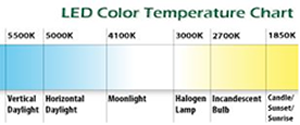 ayers and accenting your environment. Being able to change color temperatures only enhances your design.
ayers and accenting your environment. Being able to change color temperatures only enhances your design.
-
Common bulb color temperatures are 2700k, 3000k & 4000k
Creating Layers Of Light
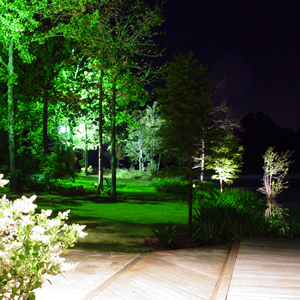 Well-designed lighting enhances the outdoor living space and usually consisting of three layers of lighting:
Well-designed lighting enhances the outdoor living space and usually consisting of three layers of lighting:
-
Ambient lighting - is a great starting point for most outdoor lighting projects, Whether this space is close to the home or at the furthest point of the property, lighting should be bright enough to allow people to interact and socialize. Good ambient lighting sets the overall mood for the property, Warmer lamp temperatures, such as 2700K; offer a soft glow of light, which is perfect for areas closer to the home and in sitting areas where the cooler 4000k lighting is great for creating a romantic moon lit getaway.
